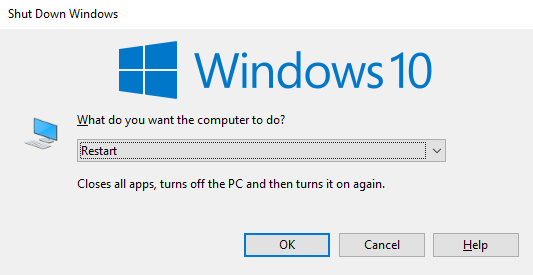
Introduction
In the dynamic realm of operating systems, the concept of restarting without the traditional reboot may seem like an enigma. However, Windows 10, with its versatility and array of features, provides users with innovative methods to achieve a restart-like experience without the need for a full system reboot. This comprehensive guide aims to demystify the process of restarting Windows 10 without undergoing a complete reboot, offering users a range of strategies and tools to refresh their system and enhance performance. Whether you’re a power user seeking efficient workflows or a casual user looking to optimize your Windows 10 experience, this guide equips you with the knowledge to achieve a seamless restart.
Understanding Traditional System Reboots
1. Purpose of System Reboots:
- Traditionally, system reboots in Windows 10 are performed to apply updates, install software, or address system errors. Rebooting refreshes system resources and ensures that changes take effect.
2. Inconveniences of Full Reboots:
- Full reboots can interrupt workflows, close applications, and consume time. Users often seek alternatives to achieve a restart-like experience without the downtime associated with a complete system reboot.
3. Windows 10 Restart Options:
- Windows 10 provides various restart options, including a regular restart, a restart with updating, and a restart to access advanced startup options. However, these methods involve a full system reboot.
Achieving a Restart-Like Experience without Rebooting
1. Using the Restart Manager:
- The Windows Restart Manager is a built-in tool that allows certain applications to be restarted without affecting the entire system. This is particularly useful for applications that support this feature.
- Open Command Prompt as an administrator.
- Use the following command to list processes that can be restarted:
bash
shutdown /r /o /f /t 0
2. Restarting Explorer.exe:
- Restarting the Windows Explorer process can provide a quick refresh of the desktop environment without the need for a full system reboot.
- Open Task Manager (
Ctrl + Shift + Esc). - Locate “Windows Explorer” under the “Processes” tab.
- Right-click on “Windows Explorer” and select “Restart.”
- Open Task Manager (
3. Refreshing System Icons:
- Refreshing system icons is a simple yet effective way to give the appearance of a restart without rebooting the entire system.
- Right-click on the desktop.
- Select “Refresh” from the context menu.
4. Using PowerShell to Restart Services:
- PowerShell can be utilized to restart specific services without rebooting the entire system.
- Open PowerShell as an administrator.
- Use the following command to restart a specific service:
powershell
Restart-Service -Name "ServiceName"
5. Utilizing Third-Party Tools:
- Various third-party tools are designed to provide a restart-like experience by refreshing system components without the need for a full reboot. Tools like Winaero Tweaker and RefreshPC can be explored cautiously.
6. Custom Scripts for Quick Actions:
- Users can create custom scripts or batch files to automate specific actions that mimic a restart without rebooting. This approach allows for flexibility and customization.
- Use a text editor to create a batch file with desired commands.
- Save the file with a .bat extension and run it to execute the commands.
Best Practices for Achieving a Seamless Restart
1. Back Up Critical Data:
- Before experimenting with restart-like methods, ensure that critical data is backed up to prevent potential data loss.
2. Verify Application Compatibility:
- When using the Restart Manager or third-party tools, ensure that the targeted applications and services support the restart-like functionality to avoid potential issues.
3. Check for System Updates:
- Regularly check for and install system updates to ensure that your operating system is equipped with the latest features and improvements.
4. Monitor System Resources:
- Keep an eye on system resources using Task Manager or third-party monitoring tools. This helps identify resource-intensive processes that may benefit from a restart-like refresh.
5. Exercise Caution with Custom Scripts:
- When creating custom scripts or batch files, exercise caution and verify the commands to avoid unintended consequences. Test the scripts in a controlled environment before applying them system-wide.
6. Explore Power Plans and Sleep Options:
- Adjust power plans and sleep options to optimize system performance. Configuring sleep settings can provide a balance between energy efficiency and system responsiveness.
Conclusion
Windows 10, with its innovative features and tools, allows users to achieve a restart-like experience without undergoing a full system reboot. This comprehensive guide, enriched with insights into the Restart Manager, desktop environment refresh, service restarts, and custom scripting, equips users with a diverse toolkit to seamlessly refresh their Windows 10 experience. Whether you’re a tech enthusiast exploring advanced PowerShell commands or a casual user looking for quick desktop refresh options, let this guide be your companion on the journey to achieving a restart without the inconveniences of a complete reboot. As you navigate the intricacies of Windows 10, may these strategies empower you to maintain a responsive and efficient computing environment, striking the perfect balance between system optimization and user convenience.